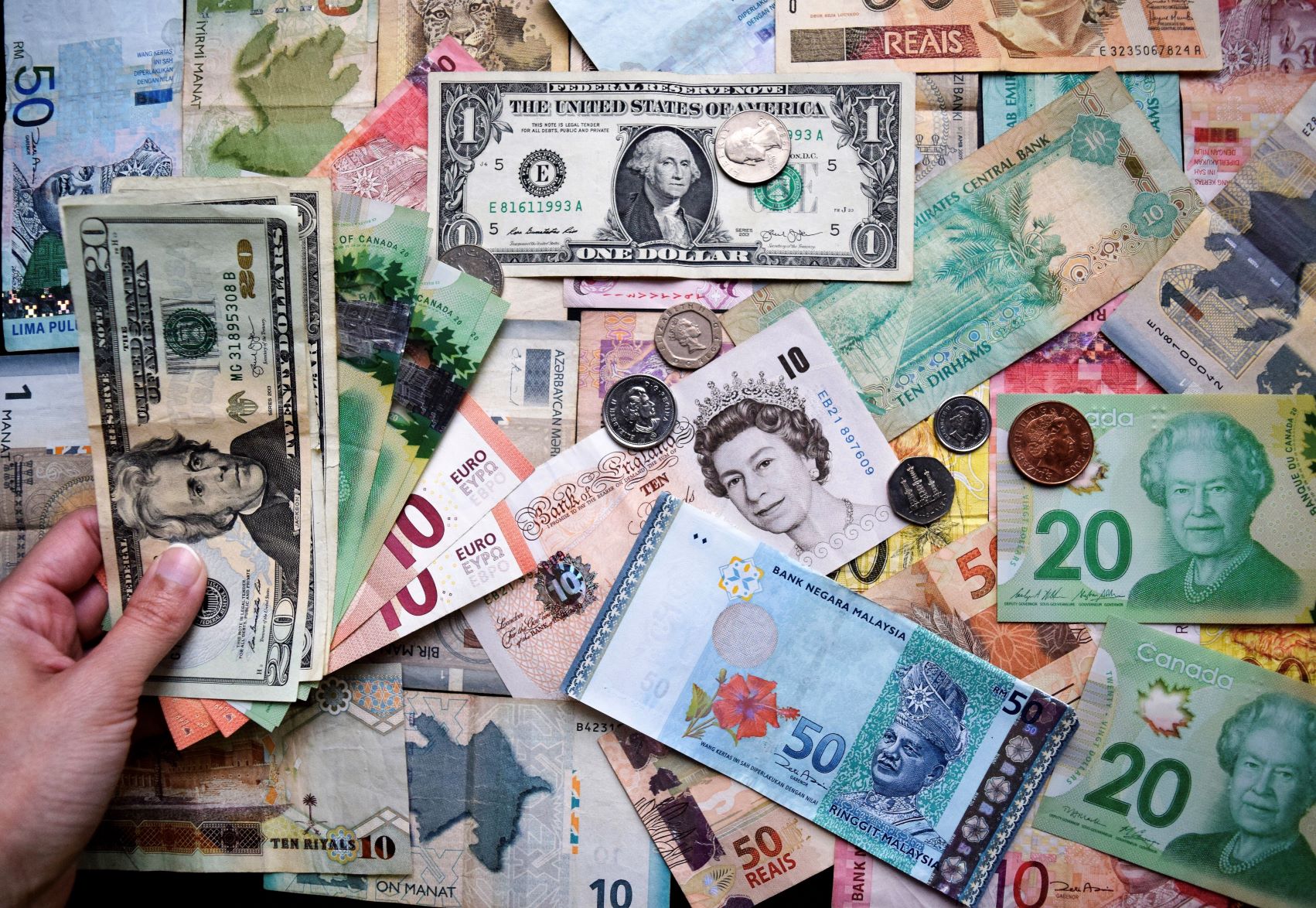Economic theories of the past have resurfaced as globalisation and innovation continue to create an increasingly interconnected world. It has been argued that traits of mercantilism can be seen in the growth structures of modern economies. Is a mercantilist growth strategy advantageous and sustainable or myopic and problematic?
A brief history of mercantilism
Historically, mercantilism has been defined as the macroeconomic objective of the constant pursuit of a trade surplus, where net exports are greater than net imports. This idea was at its peak between the sixteenth to eighteenth centuries. It was often accompanied by an underlying imperialist mentality, which can be explored through the Spanish, Portuguese, Dutch, British and French Empires. Colonies played a prominent role in European countries, increasing their wealth through exploitation. Raw materials were taken from colonies to the ‘mother countries,’ who used their industrial capabilities to turn them into manufactured goods. These would then be sold to the colonies at high prices. Exchanges between colonies were forbidden, and economic gain for colonies that did not benefit the mother country was prohibited. These mercantilist policies did indeed increase the wealth of the European powers but at the expense of the colonies. Some former colonies are still recovering today, whether politically (in the form of political corruption or unrest), socially (increased social unrest), or economically (given the aftermath of the exploitation of their finite raw materials).
Modern day neomercantilism
Mercantilism, then, as an economic practice, slowed due to increased globalisation and the introduction of free trade agreements, including GATT and the establishment of the WTO. However, in recent decades, there has been a reemergence of the idea that various countries are undertaking mercantilist policies. This has been named ‘neomercantilism.’ The same core economic theory of trade surplus has now been adapted to modern economic and political systems.
Mercantilist policies can be methods of stimulating economic growth. However, there are fundamental flaws that limit its growth prospects, especially in terms of maximising utility for all parties (companies, domestic and international populations, etc.).
Mercantilism as a growth strategy
Following a mercantilist policy can indeed encourage growth in modern economies. Peter W.B. Phillips [1] suggested that ‘national mercantilism has been replaced by corporate mercantilism.’ Where historically international trade was carried out by nations or within empires, the globalised interconnected world has increasingly led to the rise of multinational corporations, with ‘companies’ now being ‘more dependent on international trade than countries. However, this increased connectivity means that countries that aim to grow through neomercantilist policies strive for their MNCs to obtain international competitiveness by developing a comparative advantage.
H. Schmitt [2] asserts that the method of achieving this is to incentivise a high rate of innovation, investment, and productivity. As a result, firms are forced to invest in increasing their productivity and eliminate any signs of x-inefficiency. This leads to a reduction in their average cost, which, in turn, lowers their prices, attracting international customers and remaining competitive. Additionally, by investing in research and development, they can utilise the most advanced and efficient capital inputs in their production process, leading to increased output for the same quantity of inputs. Therefore, these firms can produce at a lower opportunity cost, and eventually gain a comparative advantage in international markets, boosting their domestic economic growth.
Is China neomercantilist?
An example of a country that has arguably used a mercantilist structure to grow is China. China integrates corporate mercantilism with a centralised structure, using TNCs within the government’s control, such as the Sinopec Group. Also, unlike most central banks, the People’s Bank of China is not independent. China’s economic model could therefore be described as neo-mercantilist, given its emphasis on export-led growth, state-affiliated TNCs, and repeated attempts to devalue the Yuan. China’s main USP is its status as the world’s largest exporter of goods. This is all managed by policy through the government controlling capital movements, even the MNCs within China.

Chinese growth: productivity, transport and investment
So, what is it about China that has propelled them to the position of the ‘world’s factory,’[3] leading them to become one of the world’s fastest-growing economies?
Peter Pham [4] suggests it is their ‘shrewd government’ and the ‘power of productivity’. Throughout its period of rapid growth, China has invested more and more in transport infrastructure. As the graph below shows, ‘the total investment in fixed transport infrastructure was RMB 609.11 billion, 79 times the investment figures calculated in 1978’ [5] (the year China’s rapid growth is thought to have begun). This is not a coincidence. Rather, maximising their international competitiveness in maintaining high productivity and efficiency fuelled China’s growth by attracting FDI. Secondly, a role was certainly played by China’s focus on global markets and its dumping policy, in which export prices are low, and the Yuan is devalued. A lower price makes Chinese goods more competitive internationally, allowing China’s producers to maximise market share. Thirdly, reverse engineering strategies, which some may deem unethical, were supported by the Chinese government and helped fuel its export market growth.

The tools China have employed have all helped maximise growth. Although the increase in trade liberalisation has helped foster economic growth in recent years, such growth can still be seen as mercantilist. All the aforementioned tools reflect the underlying policy of maximising exports and maintaining trade dominance. This has fuelled China’s rapid growth and made it an important commercial partner with the US, the world’s largest economy.
The flaws of mercantilist growth strategies
However, whilst mercantilism may seem to propel economic growth in modern economies, in actuality, it may be a slippery slope to perilous consequences. These include imperialism, a suffering domestic population, and even an eventual limit on economic growth, as mercantilism is not a viable long-term mechanism of sustainable growth.
Flaw #1: Promotes exploitative rather than independent growth
One of the main issues with mercantilism is that it does not permit all countries to experience economic growth. It is not possible for all countries to simultaneously have a trade surplus. As such, even at its best, mercantilism, cannot be used as an effective form of growth on an international scale.
Once again, China is a case in point, illustrating how mercantilism does not benefit all stakeholders. In recent years, many countries and MNCs have taken an interest in Africa because of its futuristic economic growth prospects and the fact that it has a growing proportion of the world’s population. China has been an integral part of this – its investment in Africa has increased by more than 100-fold since 2001 [6].Since 2012/2013, Africa’s trade deficit with China has increased dramatically. For example, South Africa has a trade deficit of US$ 8.5bn (2018). This alone may suggest that China is benefiting more than Africa in their trade exchanges.
The types of goods involved are also relevant: Africa’s exports to China consist of low-value goods like wood and ash, whilst Africa’s imports from China consist of higher-value finished products, such as vehicles and electrical machinery. This means that the resources which can be processed to create domestic employment for Africans – in turn boosting their economic growth, reducing their income inequality, and improving their population’s standard of living through higher disposable income – are instead shipped abroad along with all those advantages to China. In return, the finished goods are exported by China to be sold to Africa at a higher price. In addition, this ‘resource-seeking’ FDI motive leads to the depletion of Africa’s finite natural resources and threatens sustainability. As if the loss of economic gain from Africa’s resources were not enough, now African producers struggle due to China’s dumping policy undermining their ability to compete. This system looks a lot like the traditional mercantilist model – traces of dominance and imperialism are beginning to resurface.
Flaw #2: Social and economic inequality
Corporate mercantilism can also pose issues for a country’s population. These multinational corporations now focus on their profit-maximising objective. With the encouragement of free-market deregulation policies, the government has less power to reduce the development gap and provide long-term employment. China is the second-largest economy but has a GDP per capita of only 9000 USD [7]. This is only roughly a quarter of that of high-income countries, with approximately 370 million Chinese living below the upper-middle-income poverty line of 5.50 USD a day [8]. Income inequality also remains relatively high [9].
Peter Phillips argues ‘even if countries were to attempt to implement progressive social or economic programs,’ the working class and future generations would only benefit if companies would quickly be able to move abroad ‘as they wished to maximise profit margins.’ This is a trend we can see in businesses locating their production sites in China, leading to unemployment and uncompetitive firms in the domestic market. In short, economic growth in GDP without improving citizens’ quality of life is a redundant indicator of development, as it does not lead to improved societal welfare.
Flaw #3: Growth is fuelled by monetary policy manipulation rather than innovation
A further problem with mercantilism is that it can negatively impact the economy and generate political unrest. Historically, the enforcement of mercantilist measures was accompanied by a ‘zero-sum mentality.’ This encompassed two beliefs. Firstly, there is always a winner and loser in each trade – both parties cannot benefit. Secondly, wealth is fixed, so to increase your wealth, another economy must lose part of theirs.
These ideas are fallacies that can inhibit the growth of economies. For instance, these views are backed by regulations that aim to increase domestic production by ‘the depression of foreign competitors’ [10]. Global Transactions Forecast with Oxford Economics predicts that a global trade war due to endless tariffs, a protectionist measure stemming from mercantilism, might be offset due to the US-China trade war. This would wipe out an astounding $1 trillion deal worth of deals due to wiping out global trading by one-third. This prediction undermines the mercantilist belief that trade only benefits the mother nation. Instead, it points to the conclusion that trade, if regulated correctly, can benefit all nations involved, and the lack of trade can have the opposite effect. Rather than firms focusing on using innovation and product differentiation to increase competitiveness, they devalue their currency or engage in reverse engineering.
The economy suffers long-term damage as a result – sustained growth requires innovation and creativity to pave the way for their goods in the international markets. Linda Yueh [11] highlighted this in her analysis of China’s economic development, stating innovation contributes only 6-13% of China’s growth (when imitation is removed) compared to labour and capital, which contribute 60-70% to China’s growth. She believes change is required for China to maintain its growth rates. This is undoubtedly correct, particularly given that the labour workforce is predicted to slow in the future due to the impacts of the one-child policy. Competitive advantages will have to come from increased quaternary creative advances instead of strict mercantilist views.
Mercantilism, at its best, has some aspects that can stimulate economic growth. This can, to an extent, be seen in China. However, long-term growth depends on the method of implementation and flexibility involved. In terms of implementation, countries should be guided by trying to increase their trade surplus, but they should not automatically deem a trade deficit as a negative standpoint. For example, the UK has seen trade deficits, which revealed the needs of the general population could be met through imports. This links into flexibility: not all countries can be production giants, but the utility of all stakeholders should be considered to grow effectively. Whilst export-led growth is a strategy, other growth forms – from investment-led growth to the rebalancing of the economy through developing the service sector and technological advancement – offer alternate growth methods in the modern world.
Bibliography
[1] Peter W.B. Phillips, ‘Whether Free or Fair-Trade Corporate Mercantilism Rules the Day’ (1992) < https://www.jstor.org/stable/40721319?seq=1 > accessed September 2020 Pg. 57-58
[2] Hans Schmitt, ‘Mercantilism: A modern argument’ (1979) < https://onlinelibrary.wiley.com/doi/abs/10.1111/j.1467-9957.1979.tb00617.x >accessed September 2020
[3] Peter Pham, ‘Why do all roads lead to China?’ (2018) < https://www.forbes.com/sites/peterpham/2018/03/20/why-do-all-roads-lead-to-china/?sh=45611dd34ac8 > accessed August 2020
[4] Peter Pham, ‘Why do all roads lead to China?’ (2018) < https://www.forbes.com/sites/peterpham/2018/03/20/why-do-all-roads-lead-to-china/?sh=45611dd34ac8 > accessed August 2020
[5] Nannan Yu et al, ‘The growth impact of transport infrastructure investment: A regional analysis for China (1978-2008) < https://www.tandfonline.com/doi/full/10.1016/j.polsoc.2012.01.004 > accessed April 2020
[6] Marthinus Havenga, theafricareport ‘China’s growing reach in Africa: are we seeing a fair trade?’ (2019) < https://www.theafricareport.com/17380/chinas-growing-reach-in-africa-are-we-seeing-a-fair-trade/ > accessed April 2020
[7] Index mundi ‘China – GNI per capita’ < https://www.indexmundi.com/facts/china/gni-per-capita#:~:text=The%20latest%20value%20for%20GNI%20per%20capita%20(constant%202010%20US,income%20divided%20by%20midyear%20population.> accessed September 2020
[8] The World Bank:, ‘China Overview’ (2020) < https://www.worldbank.org/en/country/china/overview > accessed August 2020
[9] Peter W.B. Phillips, ‘Whether Free or Fair-Trade Corporate Mercantilism Rules the Day’ (1992) < https://www.jstor.org/stable/40721319?seq=1 > accessed September 2020 Pg. 57-58
[10] Murray N Rothbard, ‘Mercantilism: A lesson for our times?’ (2017) < https://mises.org/library/mercantilism-lesson-our-times > accessed August
[11] Linda Yueh, ’China: The Birth of a New Superpower?’ (2013) < https://youtu.be/wcbn5LFKhAw > accessed August 2020







